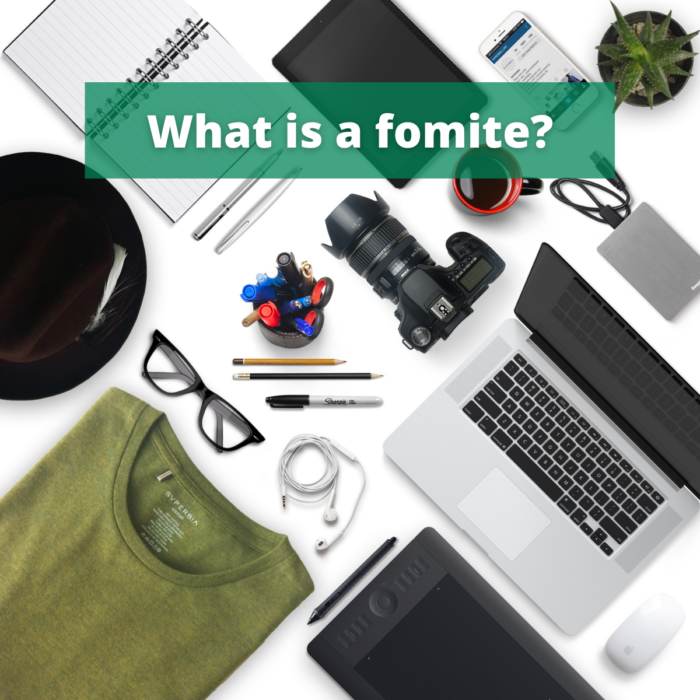What is a fomite?
A fomite is defined as an inanimate object that is able to carry and spread diseases and infectious agents. Fomites can also be called passive vectors. Contamination of a fomite occurs when an infected person coughs, sneezes or breathes, their secretions or respiratory droplets containing the virus land on these surfaces or objects.
Transmission occurs when uninfected people touch contaminated surfaces and then touch their eyes, nose or mouth, allowing the virus to enter their body and cause eventual infection.
What are the promoting factors to transmission?
– The porosity of the fomite
– The amount of bacteria or virus that can cause infection
– The temperature of the room
– The type of bacteria or virus on the fomite
– The humidity of the room
Fomites are of particular concern in health care facilities such as hospitals, doctors surgeries and nursing homes. This is because there is a viral risk from fomites in these environments, where large numbers of people pass through every day. If fomites are present on medical devices, this can be a source of nosocomial infection for the patient. The introduction of new and more complex medical devices in a changing world increases the risk of these devices being a source of infection.
Gram- bacteria persist longer than gram+ bacteria. As mentioned earlier, climatic factors also play a role in persistence: humid conditions increase the survival time of most types of bacteria, such as Salmonella typhimurium, Pseudomonas aeruginosa and Escherichia coli. Only Staphylococcus aureus persists longer at low humidity.
The solution we provide
SPARTHA Medical’s technology has proven to be effective against a wide range of bacteria (Gram+ and Gram-) as well as methicillin-resistant Staphylococcus aureus (MRSA).
Based on the supramolecular assembly of natural polymers and their synthesised derivatives (polypeptides and polysaccharides), our coatings can be applied to any type of surface or geometry in a customised manner. Fomites (infection-carrying and transmitting areas) are thus treated with anti-viral, anti-inflammatory, and anti-bacterial properties on these surfaces.
Sources:
https://academic.oup.com/cid/article/65/8/1412/3829616
https://link.springer.com/article/10.1007/s40726-019-00123-6

